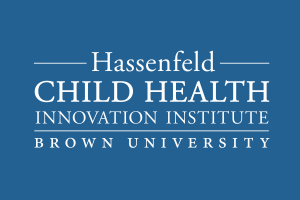At Brown’s Hassenfeld Child Health Innovation Institute, Professors Stephen Sheinkopf and Barry Lester are conducting research that could revolutionize our understanding of autism, neonatal abstinence syndrome, and other developmental disorders. With backgrounds in both pediatrics and psychiatry, they study how signs of developmental challenges can be evident early in life in a baby’s cry, eye movements, heart rate patterns, and other “biomarkers.” These biomarkers will one day help us diagnose, treat, and possibly even prevent developmental disabilities. We talked with Dr. Sheinkopf and Dr. Lester about their work and its potential implications.
What are biomarkers and why are they so powerful?
Steve: Biomarkers are measures of biological processes that are related to a disorder in some way. For example, diminished social attention is one symptom of autism. It has its roots in some biological process and we can measure underlying features related to that process. So we can measure visual attention using eye tracking methodologies to understand the mechanics and dynamics of how children with autism deploy their attention to social information. We can use these biomarkers to interrogate concepts that the individuals we’re studying can’t self report. A baby or nonverbal individual with autism can’t tell us about how interested or not they are in social information, but their eyes can tell us.
Barry: The biomarkers we look at here at the center run the gamut from very basic molecular processes to things that are observable. We think of cry analysis or visual attention as biomarkers, in addition to more traditional markers like heart rate variability, cortisol levels, and respiration.
How can biomarkers be used?
Steve: Biomarkers are used for a whole range of purposes. You can identify individuals who have or are at risk for a condition, that would be more of a screening or diagnostic marker. You can also use biomarkers to understand differences in prognosis for individuals who have a diagnosis, or to measure treatment responses. You can use them to subdivide groups within a larger diagnostic group. For example, autism is very heterogeneous and one use of biomarkers maybe to subgroup individuals who may then respond differently to different treatments.
Some biomarkers that are going to be predictive of autism might also identify individuals with other developmental disabilities related to delays in language, cognitive skills, motor impairment, and other symptoms. So we might know early on from measuring biomarkers that there may be a risk of a neurodevelopmental disorder, broadly speaking, and over time we refine the diagnosis.
It sounds that there are clinical implications for individual patients as well as ways biomarkers can advance research and improve our understanding of these disorders as a whole.
Steve: I think of this as translational in two directions. For example, we might be able to understand how sensitive or not children with autism are to mismatches in the multisensory components of speech [how what they’re hearing and what they’re seeing line up]. That might impact how a speech therapist presents activities to children to help them compensate for some difference in how they perceive the linguistic world around them. So that would be forward translation into treatment. But you can also think of backwards translation, raising hypotheses about underlying, more mechanistic features of autism that get us closer to what might be going on biologically in the syndrome.
Are these biomarkers things that the average person can pick up on or do they have to be measured in a lab or clinic?
Steve: When we publish an article about differences in cry, we start to get calls from parents who read our research, maybe they see a media report and say, “I think my baby has a strange or an odd cry, what can you tell me about it?” The acoustic measurement gives us a new vocabulary to describe in a more detailed and specific way than our conventional language.
Barry: The cry markers that we’re looking at, some of them are audible, but some are not. A classic example, there’s a very famous syndrome called cri du chat, which is French for cry of the cat. It’s a genetic syndrome somewhat similar to Down syndrome. It’s so distinctive that it’s literally diagnosed at birth, you hear the baby cry and you know exactly what it is.
When we work with babies who are going through drug withdrawal, one of the signs is a high-pitched cry. You have nurses rate whether or not the baby has a high-pitched cry and, above a certain level, the baby is put on an opioid as pharmacological treatment for withdrawal. The problem is it’s a very subjective definition; we have any number of cases where a baby will be misdiagnosed. We’re trying to figure out if there is a signature cry of a baby going through withdrawal. So we can measure it directly, instead of relying on human perceptions that may or may not be accurate.
Why is early detection so important? How do you see it transforming how we approach developmental disorders?
Barry: Preterm infants who were born less than 30 weeks gestational age are the babies who are most at risk for later impairment. Somewhere around 30 or 40% of those babies will be developmentally impaired by two years of age. What we’re looking at is how well we can predict impairment in these babies using biomarkers. We might be able to identify at the time of discharge which kids are most likely to become delayed later on, then start treatment and intervention programs early and potentially mitigate some of the adverse outcomes.
Steve: Autism in many ways is an outcome and a secondary feature of some more basic developmental process and disability. It’s a very different developmental road that children go down and the further they move, the further off the beaten path of typical development they travel. If we could use biomarkers to help understand when and how children diverge from typical development that might help us understand how and when we can intervene to keep them on track.
It changes the conversation from treatment to secondary prevention. We’re not there yet, but there’s the potential to really change the way we think of intervening from remediating deficits that are already there to bring children back to some more typical path of development and therefore prevent or diminish the onset of symptoms.
This interview was condensed and edited for clarity.



